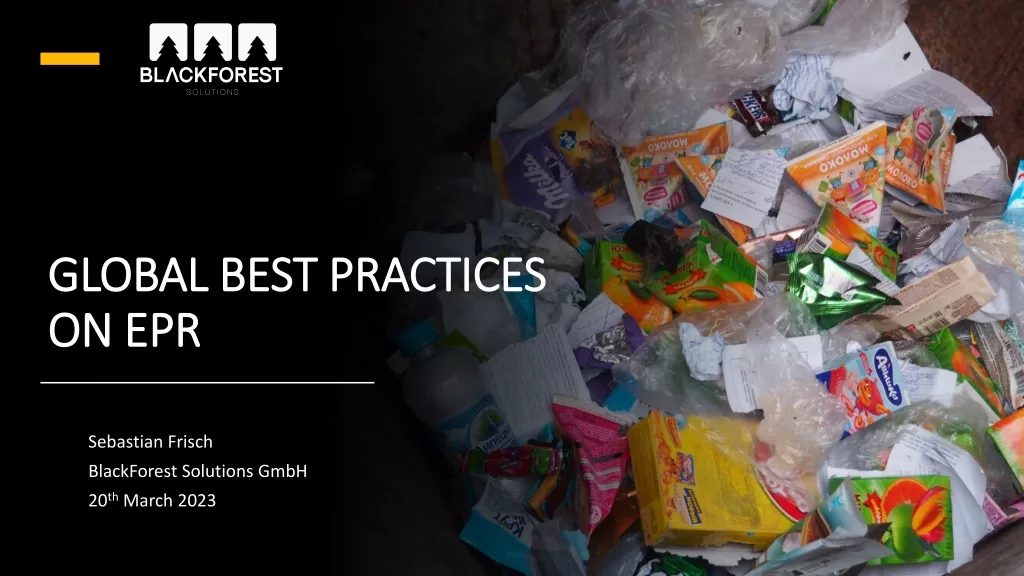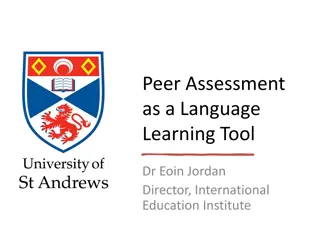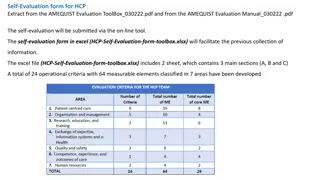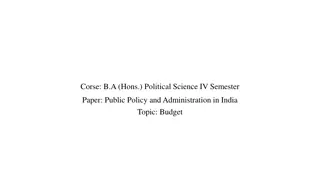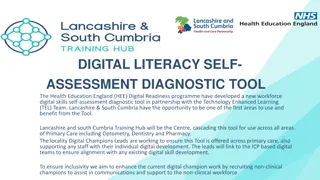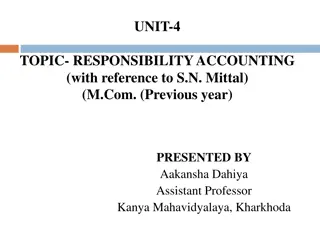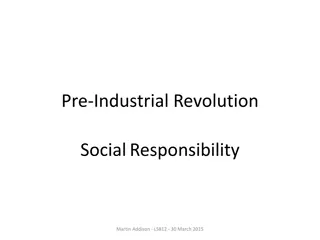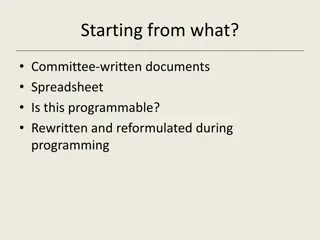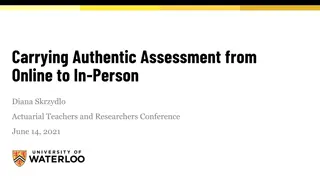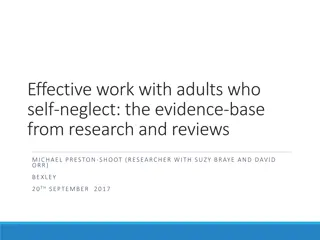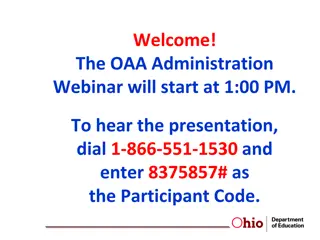Enhancing Social Responsibility in Public Administration - Self-Assessment Tool
Explore a self-assessment tool on social responsibility led by Jean-Marc Dochot at the 8th Quality Conference. Discover key topics such as organizational governance, human rights, labor practices, and environmental protection. Gain insights into promoting fairness, stakeholder relations, and community development. Dive into core subjects through the Social Responsibility Assessment Framework (SORAF) for progressive impact in public administration.
Download Presentation

Please find below an Image/Link to download the presentation.
The content on the website is provided AS IS for your information and personal use only. It may not be sold, licensed, or shared on other websites without obtaining consent from the author. Download presentation by click this link. If you encounter any issues during the download, it is possible that the publisher has removed the file from their server.
E N D
Presentation Transcript
8thQuality Conference Session 4.1: Enhancing social responsibility in public administration in-depth session Title: A self-assessment tool on Social Responsibility Name: Jean-Marc Dochot Contact: jean-marc.dochot@p-o.belgium.be
Society Sphere of influence Human rights Fairness of practices Stakeholders I Relations with Citizens Governance Labour practices Process Outputs Outcomes Citizens Staff Communities and local development Environment Stakeholders II 2
7 core subjects to investigate with the Social Responsibility Assessment Framework (SORAF) 3 5/10/2024
1. Organisational governance: Objective Organising the decision-making process and implementing procedures that facilitate the application of social responsibility principles and practices. 9 issues Integration of the social responsibility in the vision, leadership, strategy and planning, key performance indicators, accountability, relationship with the stakeholders 4
2. Human rights Objective: Ensure that public organisation see to respect for human rights in its own functioning as well as in organisations belonging to its sphere of influence. 8 issues: Duty of vigilance Discrimination and vulnerable groups Situations posing a risk to human rights Civil and political rights: freedom of opinion, movement, life Prevention of complicity Economic, social and cultural rights: welfare protection, work, health, education, cultural identity, Remediation for violations of human rights Fundamental principles and rights at work
3. Labour practices Objective Create an environment favourable to the development of the staff, starting with the consciousness of serving citizens: major factor of success and sustainability of the organisation. 5 issues: Employment and employment relationship Health, security and well-being on the job Work conditions and social protection Development and commitment of the members of staff ;;;; Participatory management 6
4. Environment Objective To prevent and limit the degradation of the environment or harm to human health due to its activities (and the impact of activities within its sphere of influence) on the environment. 5 issues the prevention of pollution the protection of the environment sustainable use of resources biodiversity and rehabilitation of natural habitats climate change mitigation and adaptation responsible purchasing 7 5/10/2024
5. Fairness of practices Objective To adopt an ethical behaviour in all of its relations with other organisations as well as with the citizen in order to guarantee durable and efficient partnerships. 3 issues Fight against corruption Fair competition Common goods access 8
6. Citizens issues Objective To ensure everyone, including the most vulnerable populations, an access to products and services by adapting them to the needs, without risking to question the health and well-being of citizens. 5 issues Access to information and services. Protection of data and the private life of citizens. Protection of the health and safety of the citizens Education and awareness. Management of complaints, assistance and resolution of claims and litigations for the citizens 9
7. Community and local development Objective To develop a responsible relationship with the communities in which it operates based on, inter alia, the recognition of the value of the community and the desire to contribute to the development of these territories and communities, on social, political, economic and cultural level. The implication within of communities The creation of wealth and income 7 issues Education and culture Health The creation of jobs and skills development Investment in social projects The technology development and access to technology 10
Examples met in the public sector related to the 7 areas Areas Examples Social dimension included in the strategic plans; ethical code; role model of the top leaders. 1. Governance Due vigilance to the situation of prisoners, refugees, social rights of the population. 2. Human rights Preference for stable work, avoid excessive use of temporary work; relaxation session, support smoking cessation. 3. Labour practices Waste sorting, encouraging conscious transport for the environment: cycling, car pooling, public transportation; energy efficiency in buildings. 4. Environment Fight against corruption; purchasing policy of fair trade; control practices of suppliers (value chain) 5. Fair operating practices Service complaints management, data protection of privacy; special attention to vulnerable groups 6. Citizens issues Acceptance of prisoners on probation at work; opening of his restaurant in the precarious population of the neighborhood. Development project in North Africa for a local administration with high immigrant density; 7. Community involvement and development 11
Guidelines: methodological approach Phase 1: Preparation 1. Compose a balanced group: managers and staff 2. Define the scope 3. Identify the motivations, key success factors and risks Phase 2: Stakeholders identification, weight and expectations 4. Identify missions, key activities and the core subjects concerned with the societal impact 5. Identify stakeholders and sphere of influence 12
Guidelines (2) Phase 3: Identify areas of priority for societal actions Link : core subject- issues- mission - stakeholders Phase 4: Elaborate a societal action plan 6. Distinction between operational actions and persuasion actions for stakeholders belonging to the sphere of influence 7. Integrate the societal action plan into the strategic plan 8. Validate the societal action plan with the stakeholders and staff, 9. Implementation of the action plan 13
Guidelines (3) Phase 5: Evaluating the implementation of the action plan and the governance of the organisation in relation to societal issues 10. Diagnosis of governance organisation linked to social responsibility 11. Formulate an improvement plan of governance of the organisation for better integration of social actions 12. Evaluate the achievement of the societal action plan with the stakeholders and the staff 14
A pilot experiment with the Belgian National Social Security Office (NSSO) The financial heart of the Belgian social system Missions: Collecting social contributions in order to finance the various branches of the social security system ( ) Examples of actions defined after the SORAF exercise 1.Human rights Make the employees aware of the respect of privacy during inspection visits or the consultation of confidential information 2. Labour practices Psychosocial risk analysis 3. Citizens issues Develop an info package on social security for schools 15
Key Success factors for the implementation of the SORAF in a public administration Coherent vision for Social Responsibility to communicate to the staff Authenticity and credibility of goals with concrete projects Added value of commitments Commitment and management support involvement of staff convinced of the value added towards their work. Internal and external communication about the project and documentation Ambassadors in different services 16 5/10/2024
Risks for the implementation of the SORAF in a public administration 1. Lack of internal communication towards the staff and internal resistances 2. Lack of time or priority level too low 3. Lack of project sustainability (one shot) 4. Limiting the project to a small circle of agents 5. Disappointment staff following a too high level of expectation. 6. Lack of care in partnership with disreputable organizations in the Social Responsibility 7. Negative impact on the daily work 8. Feeling of mandatory participation. 9. Economic and budgetary constraints on the projects. 10. Lack of time 11. Approach more theoretical than practical. 17 5/10/2024
Why Social Responsibility in the public sector? The reputation of the administration, its image in the media To attract skills in the public sector To increase staff motivation To improve relations with all its stakeholders: companies, suppliers, other public organisations, media, citizens/customers and its immediate vicinity. Recall the purpose of the public service. 18

 undefined
undefined





























